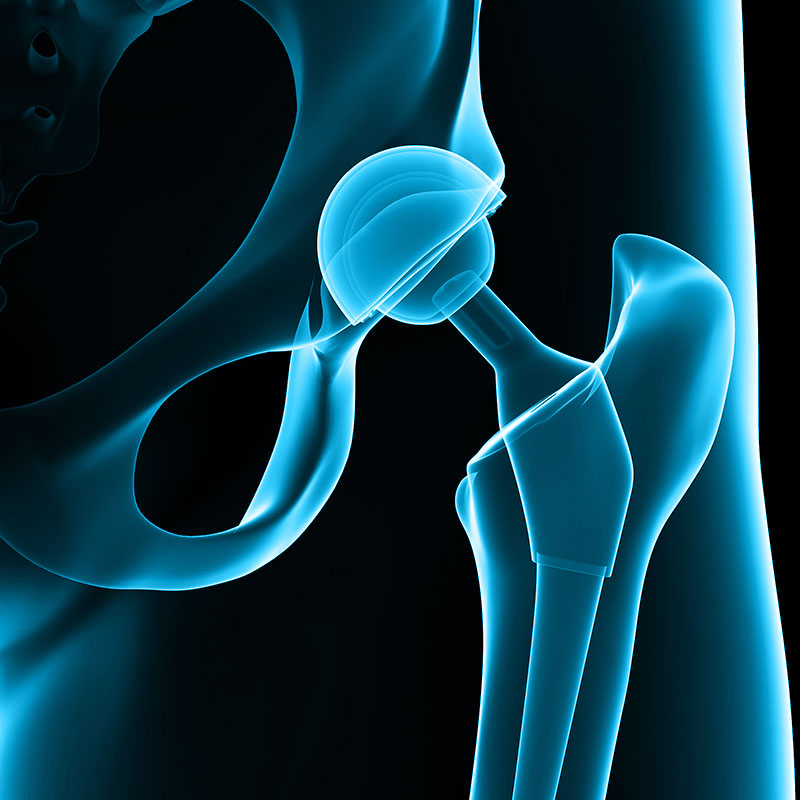Post-Surgical Precautions and Instructions
share this article
Both before and after joint replacement surgery, your surgeon and other healthcare professionals will give you a lot of different instructions. These instructions are intended to optimize healing, maintain your overall health, and help avoid any negative events as you rehab. Part of the instructions will include post-surgical precautions. Basically, this means certain things to avoid for an amount of time after your surgery. We think these instructions are important to know and follow, so we decided to highlight some of them here.
Knee Replacement
One of the good things following knee replacement surgery is there is a relatively low risk of dislocation. In general, you are free to move the knee through the full range of motion of bending and straightening. When resting and walking, you should try to keep the toes pointed forward to avoid excessive twisting stress on the prosthetic.
You should also avoid putting a pillow under the knee when lying down and try to keep the knee straight. Improving knee straightening (extension) after surgery is important and placing a pillow under your knee keeps it in a bent position. You should also avoid excessive deep squatting and kneeling initially after surgery.
You may have a lot of pain and difficulty putting weight through the knee right after surgery, so for a brief time you may need to use an assistive device such as a walker, crutches, or cane. It is also important to appropriately manage pain, swelling, and the incision. For pain, make sure you have a pain management strategy that allows you to fully participate in rehab exercises and activities. Swelling can be managed through icing, elevation, and NSAIDs. For the incision, be sure to keep it well bandaged and avoid soaking it in water until it is closed and sutures are removed.
Preventive measures should also be taken while in the hospital to prevent blood clots or pneumonia from developing. Preventative techniques for blood clots includes compression garments, anticoagulant medicine, and leg exercises such as ankle pumps. To prevent pneumonia while in the hospital, be sure take deep breaths and follow the instructions of your physical therapist and nurses.

Knee Replacement X-ray
Hip Replacement
With hip replacement surgery, there are many of the same precautions and considerations as with knee replacement surgery. Another consideration with hip replacements is the risk for hip dislocation after surgery. This is due to the trauma to the muscles and other tissues around the hip that provide stability.
The specific precautions following surgery are based on the surgical approach used by your surgeon (where the incision is made). The different approaches are front (anterior), back (posterior), and side (lateral). How long you have to maintain your hip precautions after surgery depends on the surgeon and technique used, but usually is between 6-12 weeks. You should follow your precautions for as long as your surgeon says.
As surgical techniques improve and research comes out, these precautions are starting to change to become less restrictive. However, these are the normal precautions that most surgeons go by.
The most common surgical approach is posterior or from behind. The precautions for this approach include: no bending your hip past 90 degrees or a right angle, no twisting or rotating your leg inwards, no crossing the surgical leg past the middle of your body, and no bending of your trunk too far.
With an anterior, or from the front, approach, the precautions include: no hip extension or bringing the leg backwards from neutral (such as stepping backwards), no externally rotating the leg (toes pointing outward), and no crossing the leg across the midline of your body.
Lastly, with the direct lateral approach, precautions include: no crossing the leg past midline, no external rotation of the leg (toes pointing outward), and no pivoting on the surgical leg.

Hip Replacement X-ray
Shoulder Replacement
There are a variety of surgical approaches and techniques when it comes to shoulder replacement surgery. Each surgeon and technique has specific rehab protocols that describe how to progress your range of motion and shoulder strength after surgery. You should follow the specific protocol for your surgery and not try to progress range of motion and stress to the shoulder muscles too quickly. This is to avoid negative consequences like dislocation of the prosthesis or damage to the muscles and structures at the shoulder.

Shoulder Replacement X-ray
share this article
Subscribe to our newsletter
Join our mailing list to receive the latest news and updates from the Knee Replacement Therapists. Also, for a limited time, receive a free article from The Knee Replacement Therapists describing why your x-rays may not be giving you the whole story.
Free Preview
Click here for a free preview of some of the content found in our video Programs
Knee to Know Show
Click here to checkout our popular vlog with videos on a variety of topics related to knee replacement surgery, knee pain and arthritis, and helpful exercises and activities.
Ready to get started?
Browse our programs, or purchase now.




